According to the USDA, 98 percent of farms in the U.S. are family farms.
But I was excited to tour the 2 percent — a corporate farm owned by J.R. Simplot Company, where they have more than 150,000 head of beef cattle and over a hundred employees at this one Idaho location. It’s a real live “corporate” farm that may also be referred to as a “factory” farm.
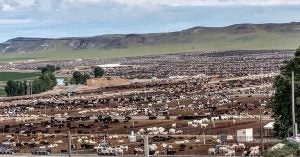
I didn’t know what to expect — I had never been to feedlot quite THIS big! But I must say I was quite impressed!
The cattle and pens were very clean — they get very little rainfall here compared with other areas of the country, so pens aren’t nearly as sloppy. I also noticed the cattle had plenty of room to run around, were comfortable chewing their cud, and acted relaxed and well-tempered.
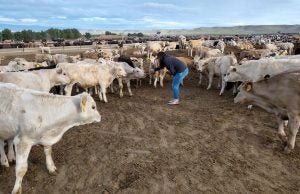
You can tell they are handled and managed well to where they aren’t stressed — an important role in producing delicious beef. A team of cowboys and veterinarians monitor their health daily. And you can see they have numerous breeds here from Charolais to Angus to Holstein.
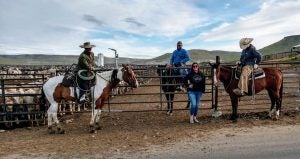
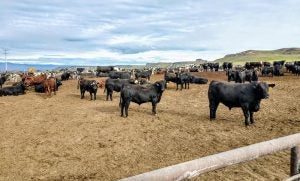
It is a myth that Holstein (dairy) bull calves typically go to veal; a majority of the time they are raised to full grown beef animals like any other breed.
This feedlot was originally developed for the Simplot potato company to have a place for their potato scraps to go. Instead of reject french fries and such ending up in a landfill, they’re consumed by cattle. The animals also eat silage and hay, corn, etc. Grass fed beef? Grain finished beef? Why not french fry-fed beef? Ha. It’s good to know livestock nutritionists spend their time figuring out just the right portions to ensure cattle nutrition, health research, rate of gain, and more.
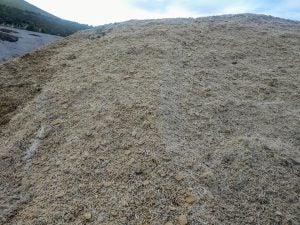
I think sometimes people fear what they don’t understand. What do we think of when we think of “corporate” farms or “factory” farming? Ugly blank faces of corporations that don’t care? I don’t really like that term! Do we “feel” like farming should be romantic by Old McDonald and a handful of animals?
All that is real and fine, but with an upcoming population of 9 billion to 10 billion people (and billions of pets to feed), larger farms play an important role in feeding and helping the planet be sustainable. Plus, we get thousands of byproducts from livestock besides just meat and leather! It’s fascinating, especially when less than 2 percent of the North American population are farmers and ranchers. Productive and impressive!
How great are these cattle? It looks like I have some new friends here that decided to curiously huddle all around me with friendly licks.
Are they sick on larger feedlots? How is their health monitored?
On these larger scale cattle feedlots, groups of cowboys ride their horses through the pens to check the health of all the cattle. There are about 17 or 18 employed here at this J.R. Simplot Company lot, and each cowboy (or cowgirl!) gets five or six horses to walk the pens with.
Here’s one in action! You can listen to him explain the process. There are 600 pens of cattle here and every pen is checked every day!
This feedlot receives about 3,000 head of cattle per week and also sends out about 3,000 to market each week — the beef goes to market for companies like Tyson Foods or JBS Foods, as a couple of examples.
Cattle arrive here a little bit after they’ve been weaned and are fed for another four to five months to put on weight to go to market as beef.
When they arrive, they’re weighed, checked, vaccinated, and go to their home pen. This farm has three full-time veterinarians and a team of people to help them, should an animal get sick.
A majority are raised with no antibiotics, but if a cowboy discovers a sick animal, they’ll be moved to a “hospital pen,” where the staff does all they can to bring them back to health. They don’t all make it, but this farm does a pretty good job where they only have a 1 percent death loss. That’s pretty impressive by industry standards!
Also, it’s important to remember that if medicine is used to help a sick animal get well again, there’s a “withdrawal time” before they go to market. This means that all meat is antibiotic free.
Are cattle cramped on feedlots? Do they have room to roam?
One thing I always find interesting is when livestock commonly choose to huddle together.
On this farm they definitely have a lot of room to run around … something anyone would like to see! But sometimes people choose to anthropomorphize situations.
Animals aren’t people. They don’t think like us nor act like us. Heck, one of my rams impregnates 40 ewes (sheep) at a time and they don’t seem to mind the fact he’s got 40 girlfriends, lol. ?
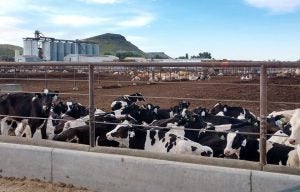
Here you can see, despite all the room to run around, they choose to lie together. They’re “herd” and “flock” animals for a reason. They prefer to cluster together regardless of size of living space.
Same goes for other animals such as chickens. “Birds of a feather flock together” is the expression, and whether there’s 50 or 5,000, they like to be in their groups. They don’t always think like us and smaller living quarters don’t bother them like it might bother us.
Just some food for thought. We all love to see animals running around with plenty of room to kick their feet up, however, decades worth of research from the animal scientists and veterinarians of the world shows that animals can and are very happy and content in situations that may not always make sense to us humans.
I always say that we should never judge a farm by it’s cover, and just because one is big doesn’t mean it’s bad! Don’t let media sensationalism, activists, or marketing labels tell the story: Any farm can do a great job regardless of size or label. It’s important that people connect with these places to learn the real facts on just how well these animals are treated. Farms like this impress the heck out of me and remind me of our own — just bigger and with more employees. If you ever get a chance, check out feedlots like this to see and learn for yourself!
Michelle Miller, the Farm Babe, is an Iowa-based farmer, public speaker, and writer, who lives and works with her boyfriend on their farm, which consists of row crops, beef cattle, and sheep. She believes education is key in bridging the gap between farmers and consumers.



